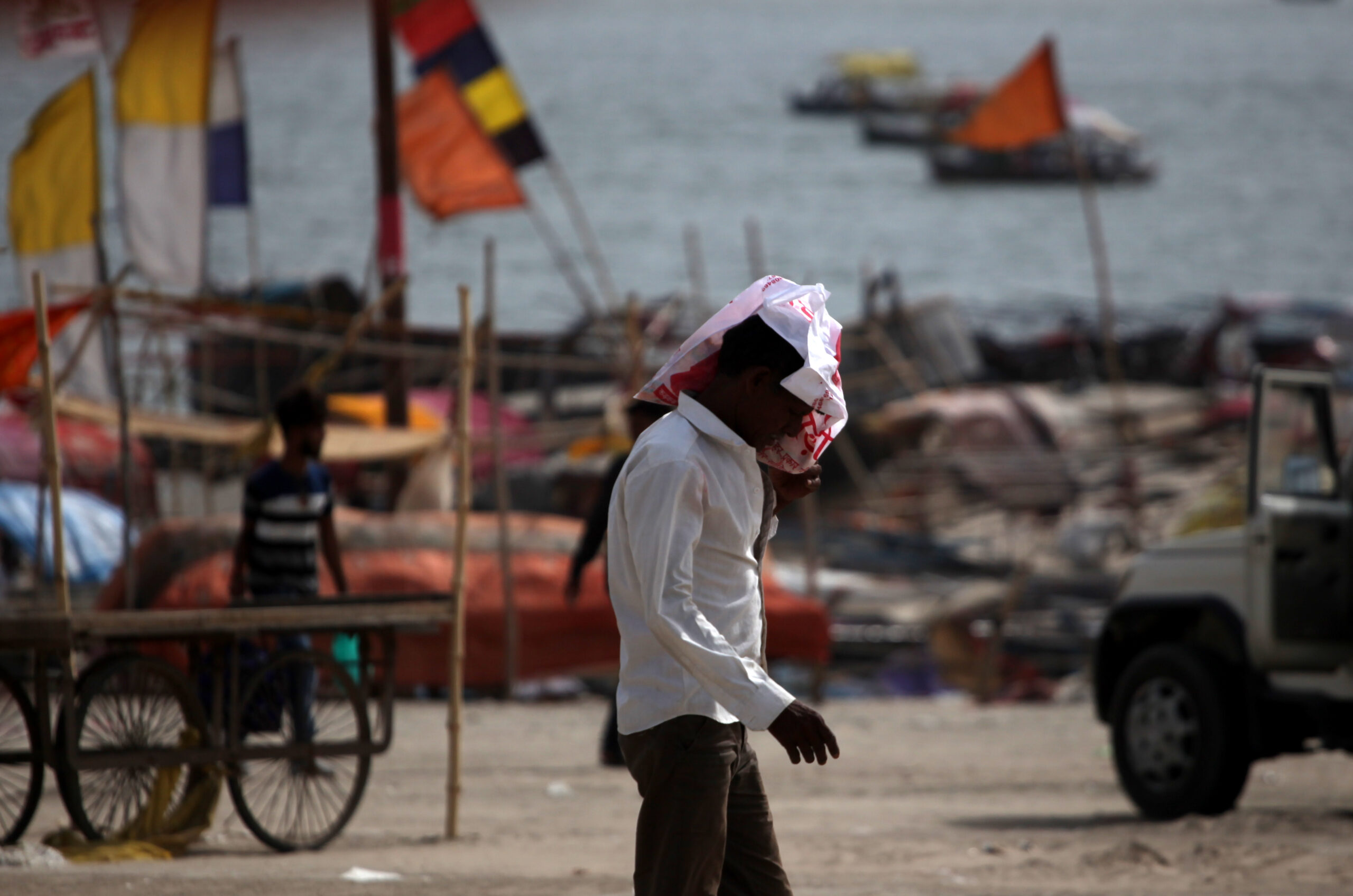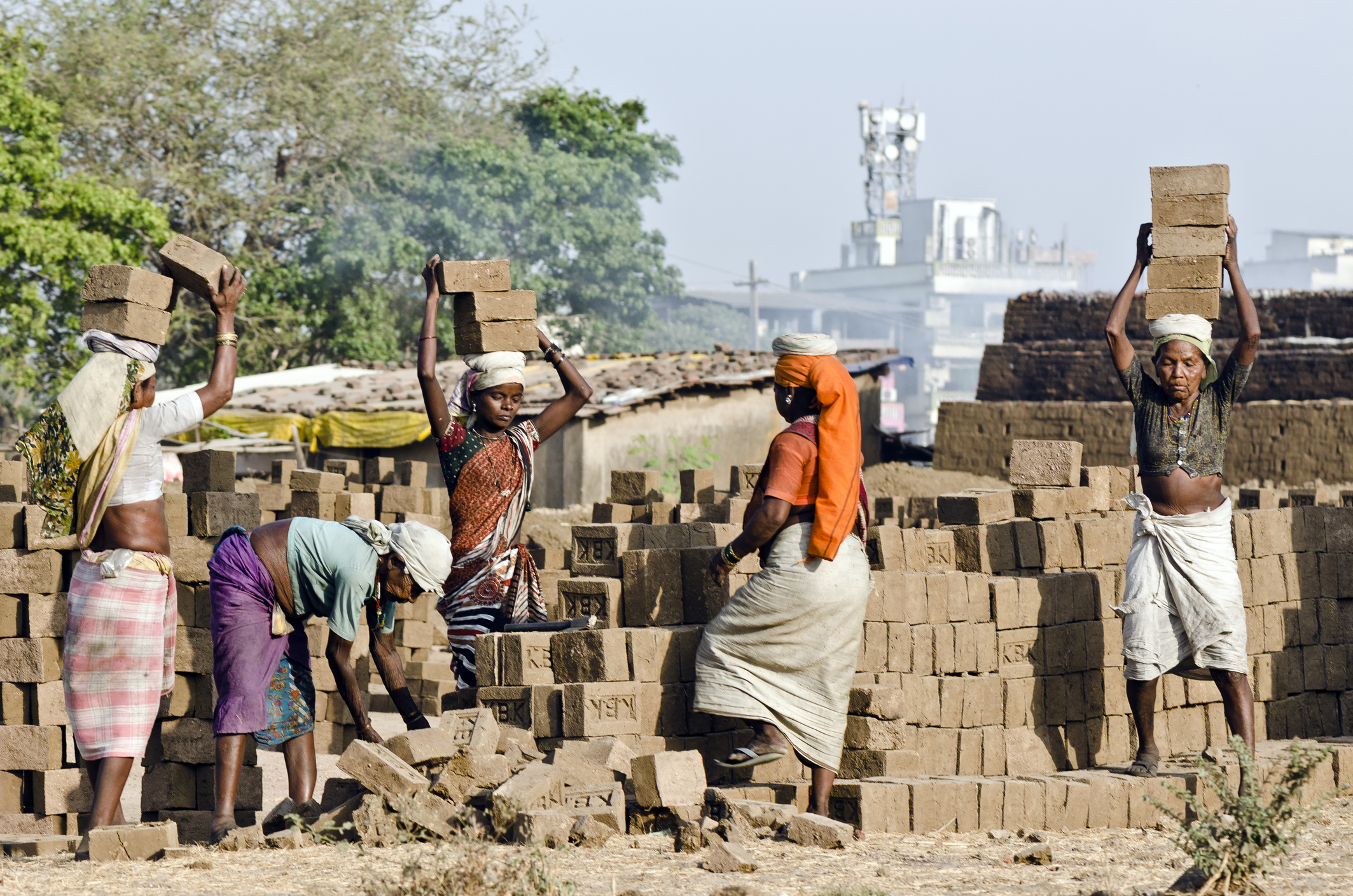Sweltering heat waves and catastrophic flooding across India show how workers’ rights and climate justice are part of the same fight for safety and survival.

It’s said that April showers bring May flowers. But in South Asia, June brings monsoons.
Across much of India and Pakistan, temperatures usually rise through May until early summer rainstorms offer some respite. This year, however, has been different. Instead of typically mild conditions, spring has brought stifling heat. Temperatures in Delhi topped 104°F (40°C) in April. And intense rains have arrived early too, flooding cities and upending livelihoods. For millions of people who lack access to healthcare, shelter, or relief, this “new normal” isn’t just unpleasant—it’s deadly.
The early onset of summer weather is especially dangerous for India’s informal, agricultural, and factory workers. Last year, the Pulitzer Center partnered with environmental reporters at Indian magazine Down to Earth to chronicle the impacts of climate change–driven heat on frontline laborers and workplaces. Their series, “No Escape from Heat for India’s Vulnerable Workers,” exposed the dire conditions and lack of support for some of the country’s most marginalized working-class populations, including factory laborers, delivery people, and women working informal jobs in impoverished communities.
Fund grantee partner KISLAY has also been researching the effects of climate change on the working class in Delhi. As a leading labor rights group striving to empower economically marginalized people, they’ve helped organize construction and domestic workers across New Delhi and the surrounding National Capital Region. Now, they’re trying to understand how massive heat waves are affecting their constituency—and what to do to protect workers from these increasingly hazardous conditions.
“Our organization has been conducting training sessions and workshops to educate workers on heat index and protect themselves from heat wave–related problems,” says Ramendra Kumar of KISLAY. “We explain how to identify the symptoms and what immediate actions to take if someone is affected.”

KISLAY’s grassroots action and advocacy are essential for workers suffering in frontline occupations. But, they are quick to point out, it is employers who must adapt workplace standards to suit increasingly extreme conditions. The government must also step in to ensure that occupational safety and health hazards policies are both adequate and strictly enforced.
“Worker organizations across Delhi, including KISLAY, have been continuously engaging with the government to develop a plan to address the impact of heat waves on workers,” says Kumar. “As a result, the Delhi government has issued a circular to all factories and construction sites, directing them to take steps to safeguard workers from heat wave risks.”
Our rapidly unfolding climate crisis can sometimes feel paradoxically incremental—sea levels are rising by millimeters each year as the Earth warms by a fraction of a degree every decade. But the increasing frequency of extreme weather events is impossible to overlook. Record-breaking heat waves, raging wildfires, and catastrophic storms are clear evidence that our planet is in turmoil.
Whether or not you can actually see the sea level rising, there can be no doubt that the climate crisis is already here. Scientists anticipate that global temperatures will continue to climb in the coming years, raising the risk of extreme weather events. And it is marginalized groups like informal workers and day laborers—who have played the least part in causing climate change—that will pay the highest price.
Countries and corporations that have pursued constant profit, at the expense of both people and the planet, have a responsibility to act on these warnings posed by extreme weather. By heeding the demands of grassroots groups like KISLAY—whose research and advocacy are grounded in lived experience of the climate crisis—they can help lead the way toward climate justice and a fairer future for workers everywhere.
Sign up to our newsletter
Add some impact to your inbox.
By submitting this form, you accept that your data will be stored and processed in line with our Privacy Policy.


